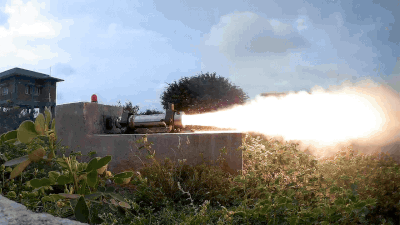- News
- India News
- B’luru startup SpaceFields Hot-tests India’s first AeroSpike rocket engine
Trending
B’luru startup SpaceFields Hot-tests India’s first AeroSpike rocket engine
SpaceFields, incubated at IISc, has successfully tested India's first AeroSpike Rocket Engine at its Challakere facility. The engine achieved a peak thrust of 2000N and featured altitude compensation for optimal efficiency. Supported by funding from Startup India Seed Fund, Boeing India, and state governments, this marks a significant advancement in space technology.

“The test demonstrated impressive results, with the engine achieving a maximum recorded pressure of 11 bar and a peak thrust of 2000N.

SpaceFields has chosen Titanium grade 5 (Ti-6Al-4V) as the primary material for constructing the engine, citing its superior strength-to-weight ratio compared to conventional materials like Inconel or steel. This choice allows for significant weight reduction while maintaining the structural integrity needed to withstand the extreme pressures and thrust generated during operation.
“A key innovation in the engine’s design is the use of a patent-pending GFRP-based ablative thermal insulation to protect the aerospike’s surface. This composite insulation liner undergoes pyrolysis above 1400K and has been tested to withstand temperatures up to 3000K,” the firm said.
The AeroSpike design offers a unique advantage over traditional bell nozzles: altitude compensation. This feature allows for optimum efficiency across various pressure regimes, potentially leading to reduced staging and fuel requirements for orbital missions. SpaceFields is also exploring ways to incorporate thrust vectoring into the aerospike engine, further enhancing its capabilities.
This successful test marks a milestone in space technology development, potentially paving the way for more efficient and cost-effective space launch systems in the future.
SpaceFields, which has received funding from Startup India Seed Fund, and additional grant support from Boeing India, Govt of Karnataka and Govt of Odisha, in Feb raised $800,000 (Rs 6.5crore), which was earmarked for development and testing of critical hardware and various subsystems, R&D in energetic materials and expanding the company’s team.
End of Article
FOLLOW US ON SOCIAL MEDIA










